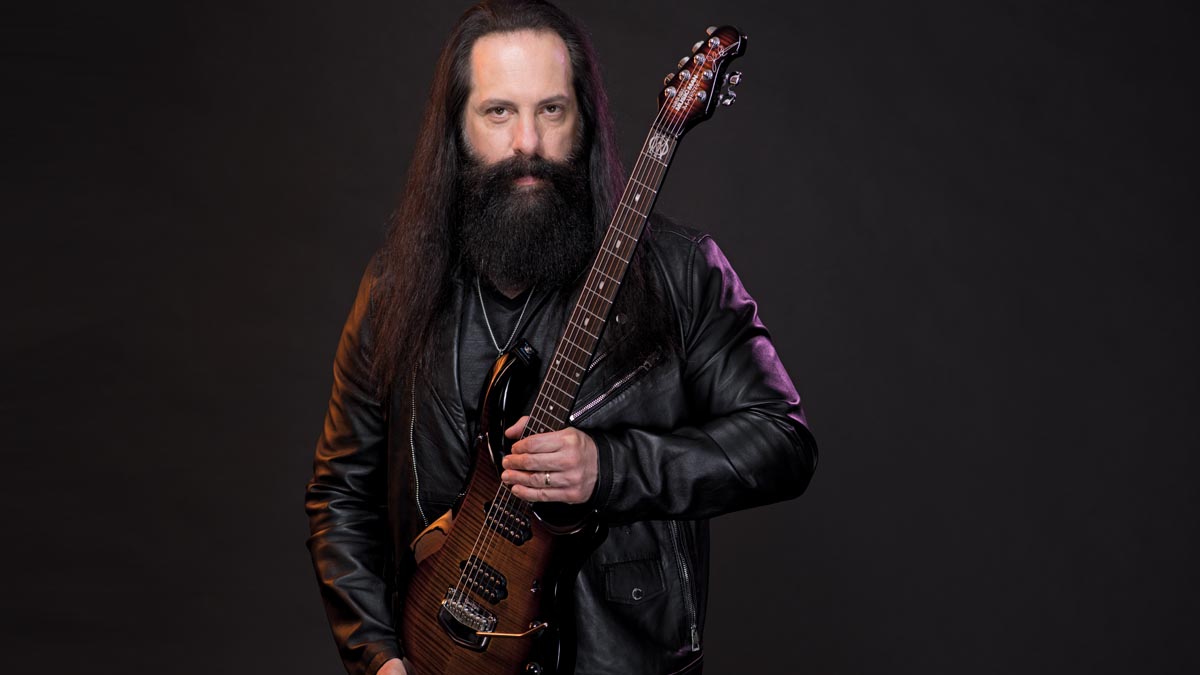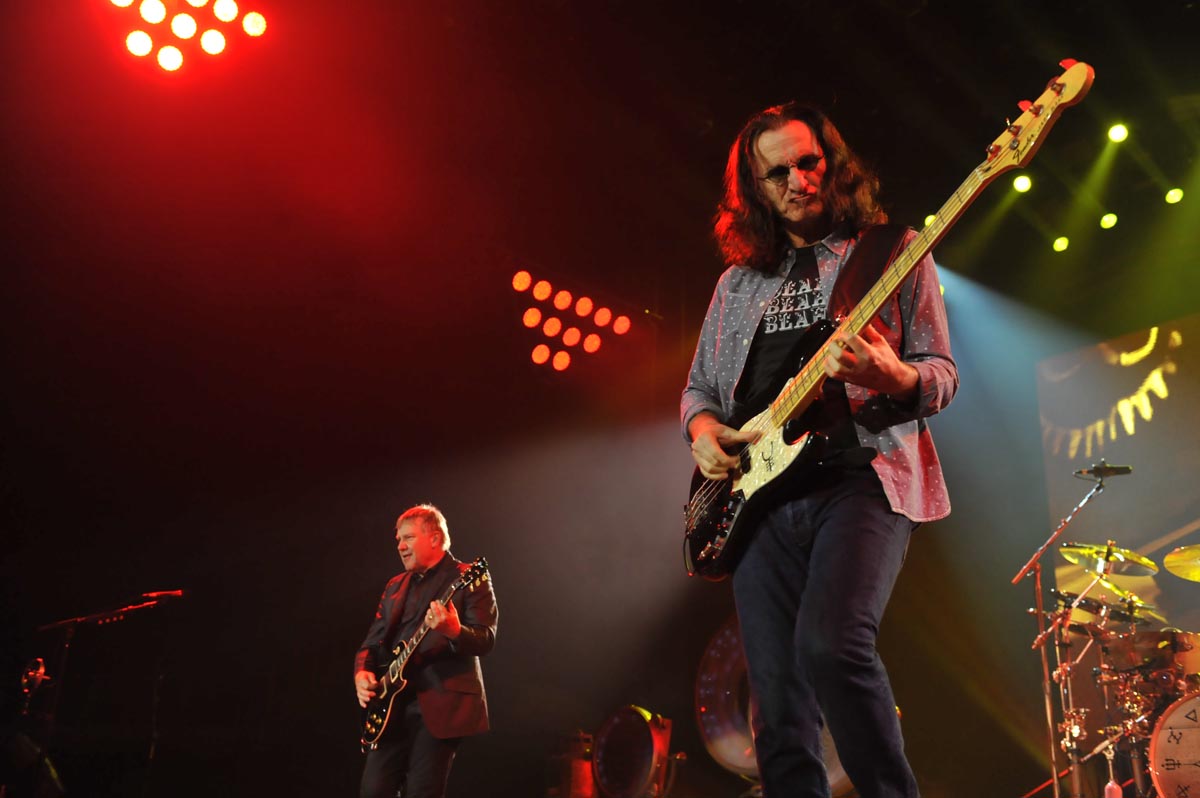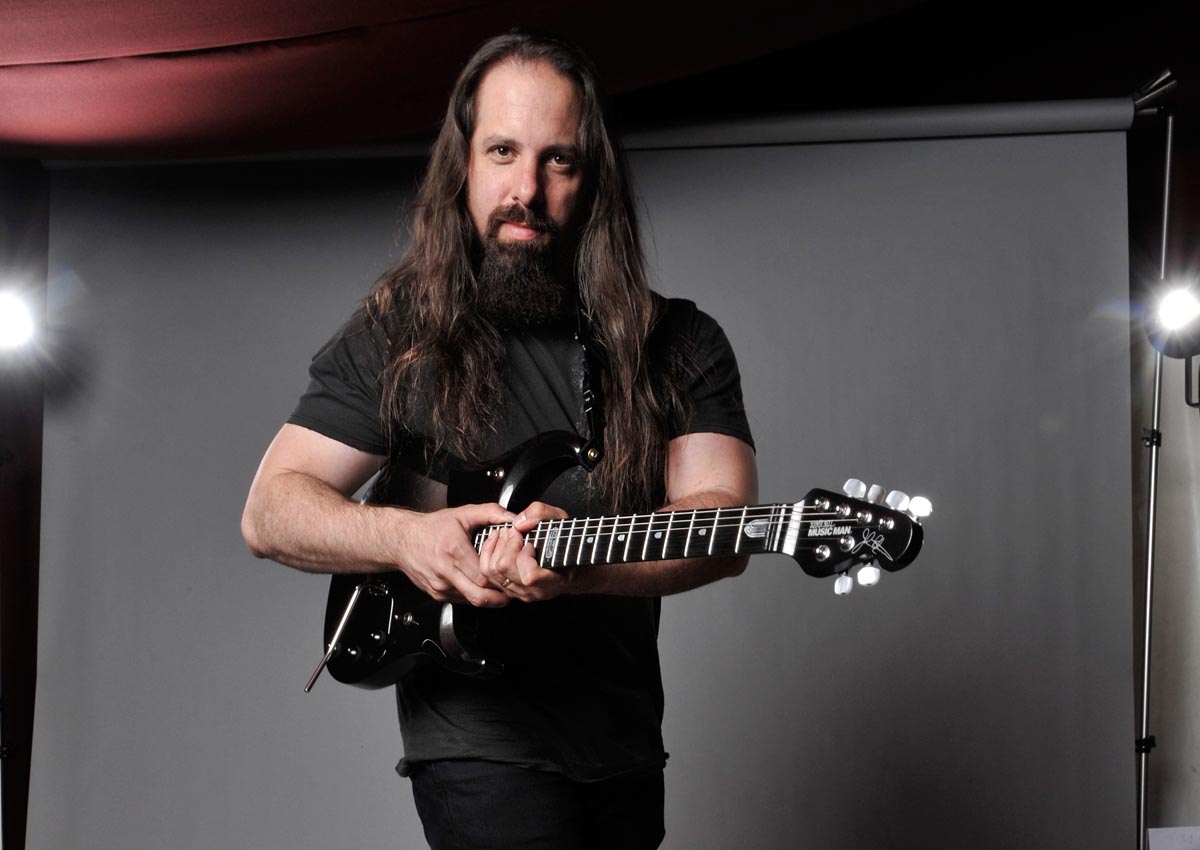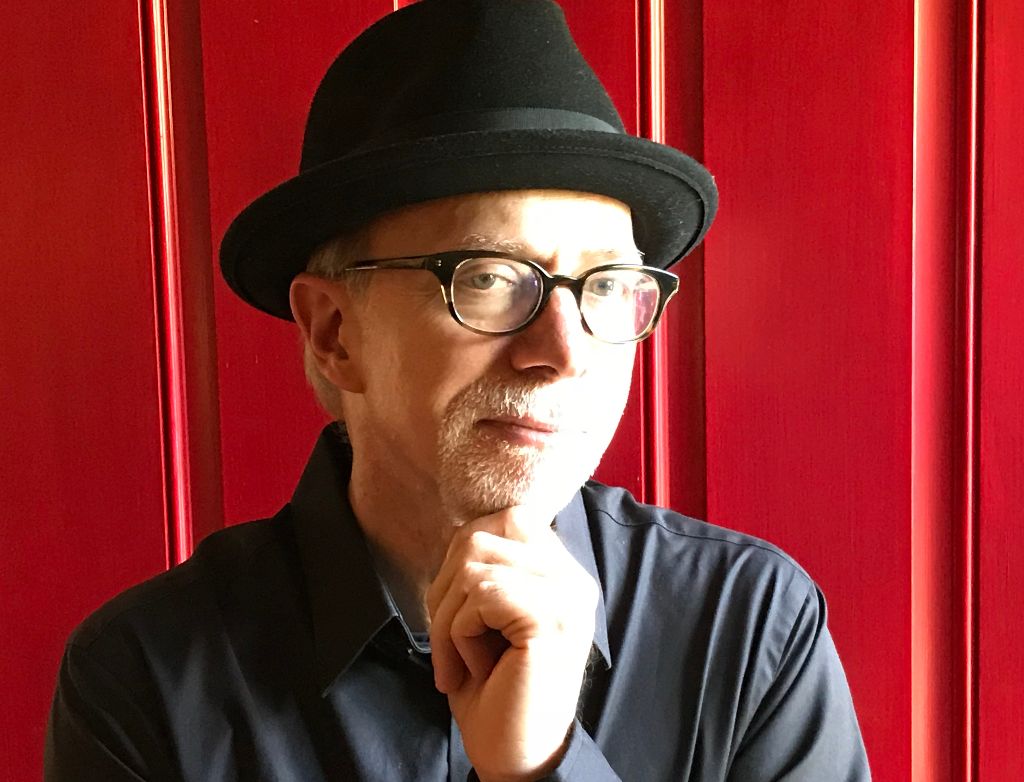
“I adore Rush, and I’ll never stop geeking out on them,” says Dream Theater guitar god John Petrucci.
“For me, and probably a lot of people from my generation, Rush is a band that has been part of the fabric of my life.
“And it goes beyond their music and extends into everything they’ve done. They always stuck to their guns and did exactly what they wanted. Their live shows were always presented in a unique and special way. Quite simply, there’s no band quite like Rush.”
I think we were listening to Bastille Day and we were commenting on how majestic it sounded. Suddenly, we were like, ‘We should call the band Majesty'
It’s a view that has been shared by most members, past and present, of Petrucci’s band, Dream Theater.
“Keyboard players aren’t always as big into Rush as much as guitarists, drummers and bass players,” he says. “I know that Jordan Rudess was more influenced by ELP, Genesis and Gentle Giant. But when I met [bassist] John Myung at Berklee, we clicked right away on Rush, and then [drummer] Mike Portnoy was a tying factor – he was way into them. Rush were a major part of our conversations.”
In fact, Petrucci reveals that Dream Theater’s original name, Majesty, was derived from a Rush song.
“I think we were listening to Bastille Day and we were commenting on how majestic it sounded. Suddenly, we were like, ‘We should call the band Majesty.’ So right from the beginning, Rush were influencing our choices.” [Of course, Majesty is also the name of Petrucci’s signature model by Ernie Ball Music Man.]
Get The Pick Newsletter
All the latest guitar news, interviews, lessons, reviews, deals and more, direct to your inbox!
In terms of how to do things with originality, creativity and wit, they’re the ultimate band, one that I continuously fanboy over
Even today, Petrucci admits that the question “What would Rush do?” gets bandied about during group rehearsals and meetings.
“A lot of times, if we have professional conundrums like, ‘How should we handle this?’ or ‘How should we present this?’ we’ll kind of refer to Rush. They always seemed to do things right. I can’t think of a time they made a wrong move.
“They’ve always intrigued me, and they’ve never disappointed me. In terms of how to do things with originality, creativity and wit, they’re the ultimate band, one that I continuously fanboy over.

Petrucci points to various aspects of Dream Theater’s music that have been lifted from the Rush playbook.
“Concept albums and our manner of storytelling – none of that would have happened without Rush,” he says. “And the way we’ve called things Part 1 or used Roman numerals, or even how we’ve had three different sections like Erotomania, Voices and The Silent Man – we were absolutely wearing our Rush influences on our sleeves.” He laughs, then adds, “I’d be lying if I said otherwise.”
With a lot of guitar players, you can hear the blues rock roots very strongly, but with Alex, even though he had those influences, there was other stuff in there
In the following interview, Petrucci further details his unabashed love of all things Lifeson, Lee and Peart, and he discusses the impact Permanent Waves (which he calls “the Oreo cream” that helped comprise his three favorite Rush albums – Hemispheres, Permanent Waves and Moving Pictures) had on him.
Could you name any particular Rush song that was the gateway drug to really getting into the band?
“Growing up on Long Island, I heard Rush on the rock radio stations. I heard The Spirit Of Radio and really liked it, but it was when I heard Tom Sawyer and Limelight that I really started paying attention.
“Around this time, I had several good friends – they’re still good friends, actually – and they were big-time Rush fans. They’d be like, “Oh, you’ve got to check out the earlier stuff. Go listen to The Trees from Hemispheres.” Or they’d say, 'You’ve got to listen to 2112.' And that opened the whole thing.”
So at that point, you went from “This is a band I like” to “This is a band I need to follow.”
”Right. Once that happened, I went back and checked out everything. My friends and I would hang out, and we’d crank Fly by Night, A Farewell to Kings and Hemispheres – all of that. This would be junior high and into high school, so I was 12 up to 17. I started playing guitar at 12, so discovering Rush coincided with my formative years.
I went back and listened to the first Rush album, which was more stripped down, more jamming and Zeppelin-y. As a young guitar player, I wanted to learn all of it
”I wasn’t influenced by some of the early prog like Genesis, although I was a big Yes fan. And right around the same time as Rush, I was getting into the Dixie Dregs and Steve Morse, so my head space was swimming with progressive, technical guitar music. Rush seemed to have their own thing.
”I was just immediately drawn to Alex Lifeson and those songs. And so I went back and listened to the first Rush album, which was more stripped down, more jamming and Zeppelin-y. As a young guitar player, I wanted to learn all of it. My friends were all bass players, drummers and guitar players. We would jam on all of that.
Can you pinpoint what it was about Alex’s playing that really spoke to you? His tone? Technique? Choice of notes?
“Just like the band, he had his own thing. Alex’s guitar playing was very different from the normal stuff that was on the radio. Hearing something like La Villa Strangiato, I was like, 'What the hell…? Nobody is doing this.'
”With a lot of guitar players, you can hear the blues rock roots very strongly, but with Alex, even though he had those influences as well, there was other stuff in there. There were chords that I’d never heard before on the guitar. He did a lot of these suspended 2nds and open-string chords. That kind of stuff excited me.”
There would be these mellow sections, and then he’d do volume swells. He just created a landscape on guitar…
”As I listened more, I began to see his evolution. The first record had that raw Zeppelin thing – I could hear the E, D, G and A chords – but the first chord of Hemispheres, I was like, 'What the hell is that? It’s like F# weird…
“It was strange, but it hit me as being very cool. And he started orchestrating the guitar in a way that Jimmy Page did. He would use 12-string electrics and acoustics. There would be these mellow sections, and then he’d do volume swells. He just created a landscape on guitar…
“And as a young player getting more and more into technique, I’d hear his solos on Freewill or La Villa Strangiato, and I just had to learn them: 'How is he doing that? How is that even possible?'“
Back then, could you play that stuff, or was it still beyond your reach?
“No. It was totally beyond my reach. I couldn’t even play Back In Black in the early days. You know how guitar is – there’s this big learning curve until your hands get strong.
“And you have to remember, there wasn’t YouTube or anything like that. You didn’t know what the guitar player was doing. I didn’t know about vibrato or bending. I would try to play Rush songs in the early bands that I was in.
Permanent Waves was like the Oreo cream of my three favorite Rush albums – Hemispheres, Permanent Waves and Moving Pictures
“I was in a band called Centurion, and my friend who is a doctor now was our singer, and he could sing really high, so we would play all of that Rush stuff. I did my best. It’s funny, because some of Alex’s licks that I learned back then, I still use them now. They just come out in my playing.
You were already into Rush by the time you really dove into Permanent Waves. How did the album strike you at the time?
“See, you have to understand what I was liking so much about them. I got into the storytelling aspect, which was very driven by Neil Peart’s lyrics. It was like being lost in a video game, the way these three musicians created this whimsical world.
“So for me, Permanent Waves was like the Oreo cream of my three favorite Rush albums – Hemispheres, Permanent Waves and Moving Pictures. Those albums were the trifecta. That stuff just tripped me out beyond belief.
They also played La Villa Strangiato, and that guitar solo, as Paul Gilbert would say, melted my face. I was so blown away. It was so inspiring
“So Permanent Waves was like the center; it was like this bridge from what they were to what they were becoming, although it had aspects of both. And I ingested all of it. All I wanted to do was be able to play every one of those songs.“
Permanent Waves is the album on which Rush got more commercial – The Spirit Of Radio, Freewill. At first, some of the band’s original fans weren’t too thrilled about that.
“Yeah, but I didn’t feel that way, nor did my friends. We just took it as a whole – 'This is the band and how they’re evolving.' And the stuff was perfectly cool musically; it had substance. When I got into Rush, I didn’t know their history. I didn’t know The Spirit Of Radio was more commercial than, say, A Farewell To Kings or Caress Of Steel.”
It was all just Rush music.
“I just took the music in and it hit me. I think most of my friends felt the same way. Maybe there were older brothers who were like purists, and they’d be like 'What are they doing now…?' But not me.“
I remember being freaked out when the band walked on stage. They were mystical heroes, so I couldn’t believe they were occupying the same space as me
Starting with Permanent Waves, Rush started to incorporate new sounds. They were influenced by the Police; you hear that particularly in the reggae section on The Spirit Of Radio.
“Definitely.“
Did that make you think, “Where are they getting that? Who are the Police?”
“Well, the Police were played on the radio a lot, so I probably didn’t notice at first. Maybe I wasn’t savvy enough musically with the full rock scene to make the connection that it was Police influenced.
“I didn’t really figure that they were doing a reggae thing until Signals, which was a couple of years later. That’s when I was like, 'Oh, wow, I can kind of hear they’re doing this.' Alex’s sort of reggae pattern guitar parts were on that record.“
When was your first Rush concert?
”It was at the Nassau Coliseum in 1982, the Signals tour. Being a Long Islander, that’s the place we went to see bands. We had these horrible seats way in the back. I remember the smell of pot – everybody was getting baked in the arena.
“And I remember being freaked out when the band walked on stage. 'They’re here! They’re in the same building as me!' They were mystical heroes, so I couldn’t believe they were occupying the same space as me.
They put on a great show... Their production had a big influence on me, and it’s how I always envisioned Dream Theater should be presented
“And they even opened with The Spirit Of Radio – I remember that. They also played La Villa Strangiato, and that guitar solo, as Paul Gilbert would say, melted my face. I was so blown away by how the solo starts off so dynamically and builds to this ridiculous flurry of notes.
“It was so inspiring to me. Plus, they put on a great show, as they always did. Their production had a big influence on me, and it’s how I always envisioned Dream Theater should be presented.
“They had lasers and blow-up props, and eventually they added video. And they tied in Hugh Syme’s artwork. You felt like you were entertaining the world of their records. Even Neil’s drum heads featured album artwork. The whole show was so brilliantly thought out and put together.“
Dream Theater have covered quite a few Rush songs over the years. A while back you guys played Jacob’s Ladder from Permanent Waves. What made you go for that track?
“For us to cover a song, we try to play things that aren’t normally on the radio, like La Villa Strangiato or Xanadu. Being geeky, nerdy Rush fans, we felt as though Jacob’s Ladder fit into that category. I mean, it’s one of their best songs. You can hear the influence that song had on Dream Theater – the odd times, the themes and just the whole structure. It doesn’t follow the typical pop song structure at all.“
There have been numerous occasions when we’ve busted into the Natural Science riff. We just never did an official cover of it
As an accomplished player, were you able to nail Alex’s parts better than when you were a kid?
“I was much better at it, for sure. [Laughs]
Did you guys ever toss around doing Natural Science?
“I don’t remember, although there have been numerous occasions when we’ve busted into the Natural Science riff. We just never did an official cover of it. But we also did a cover of Different Strings.
“I don’t know why we picked that song – maybe we were playing a more mellow event. It’s a great song, and it’s definitely one of the more obscure ones on Permanent Waves. It’s more of a ballad, for sure.“

I assume you’ve had opportunities to meet the band over the years…
“My exposure to them, or chances to meet them, have been very limited. I never met Neil, unfortunately. I did meet Alex and talked to him, and I met Geddy while filming an episode of That Metal Show. He was one of the guests, and I was the guitar player who would play out to the commercial.
“So I got a nice chance to chat with Geddy. I started talking about Rush live albums, and because there were other people there and the topic was live albums, it was a bit of a cushion for me; otherwise, I might have been nervous.“
Our fan bases are extremely invested and loyal. They’re the types of people that not only will wear the T-shirts, but they’ll also get tattoos of your logo or symbol
Do you find there are similarities between Rush fans and Dream Theater fans?
“I think you get similar types of fans who aren’t afraid of being challenged by non-traditional rock music – songs that are longer than three or four minutes – and they’re into songs with multiple parts, concept albums and artwork of a certain nature.“
You’re probably too humble to admit it, but both bands have fan bases that are extremely loyal. Neither band has fairweather fans. If you’re in, you’re all in.
“You’re absolutely right. That’s 100 percent right. Our fan bases are extremely invested and loyal. They’re the types of people that not only will wear the T-shirts, but they’ll also get tattoos of your logo or symbol. And I think they see how we are loyal Rush fans, to the point where we’ve crossed over in personnel.
“Hugh Syme has done a lot of Rush’s album covers, and he’s done a lot of Dream Theater covers as well. In the studio, we worked with guys like Paul Northfield, Terry Brown and Rich Chycki – all from the Rush camp. So yeah, we’re all in, too! [Laughs]“
Joe is a freelance journalist who has, over the past few decades, interviewed hundreds of guitarists for Guitar World, Guitar Player, MusicRadar and Classic Rock. He is also a former editor of Guitar World, contributing writer for Guitar Aficionado and VP of A&R for Island Records. He’s an enthusiastic guitarist, but he’s nowhere near the likes of the people he interviews. Surprisingly, his skills are more suited to the drums. If you need a drummer for your Beatles tribute band, look him up.
“Even the thought that Clapton might have seen a few seconds of my video feels surreal. But I’m truly honored”: Eric Clapton names Japanese neo-soul guitarist as one to watch
“You better be ready to prove it’s something you can do”: Giacomo Turra got exposed – but real guitar virtuosos are being wrongly accused of fakery, too











